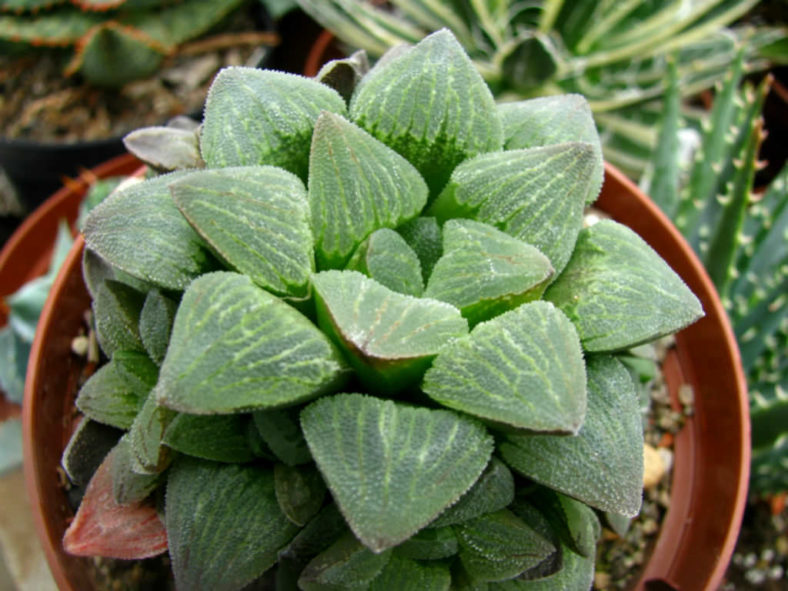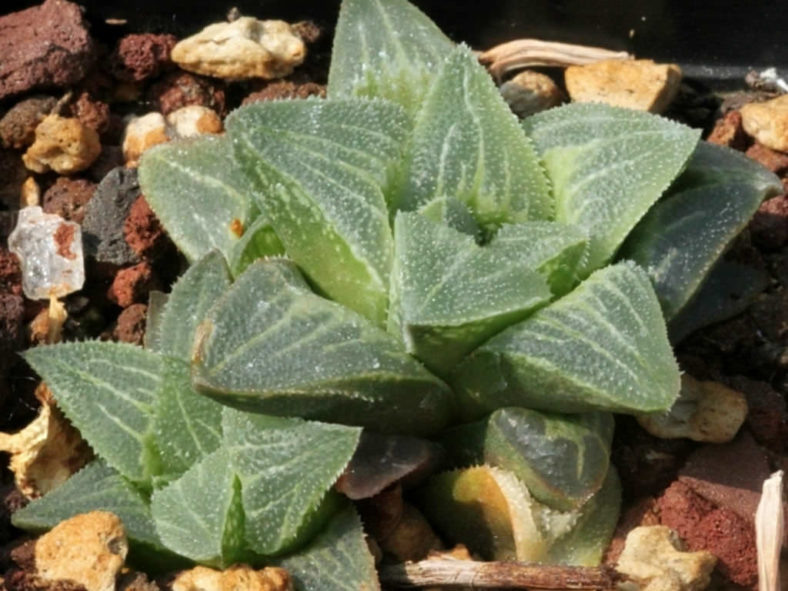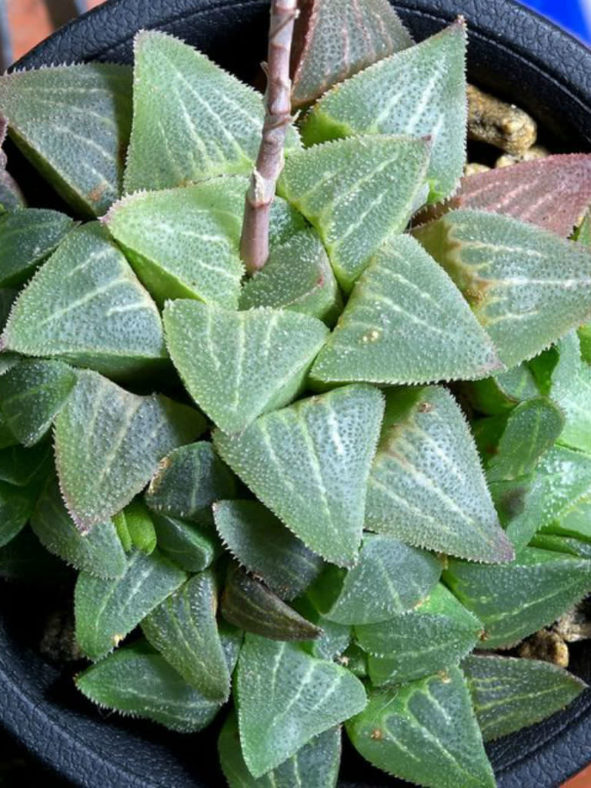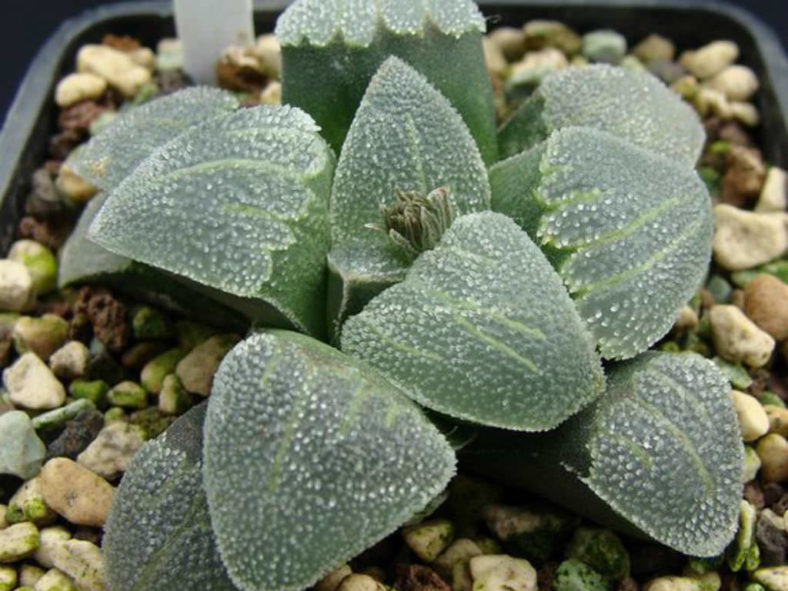Scientific Name
Haworthia pygmaea Poelln.
Synonym(s)
Haworthia esterhuizenii, Haworthia pygmaea f. crystallina, Haworthia pygmaea var. esterhuizenii, Haworthia pygmaea var. pygmaea
Scientific Classification
Family: Asphodelaceae
Subfamily: Asphodeloideae
Tribe: Aloeae
Genus: Haworthia
Etymology
The specific epithet "pygmaea" (pronounced pig-MAY-uh) means "of or pertaining to a pygmy or dwarf; short; of reduced stature" and refers to the small size of the rosettes.
Origin
Haworthia pygmaea is native to South Africa. It grows in sparse grasslands in coastal renosterveld in a small area near Mossel Bay in the Western Cape province.
Description
Haworthia pygmaea is a small succulent that forms stemless rosettes of rough, grey-green to brownish-green leaves with 3 to 5 lighter lines. The rosettes can grow up to 1.6 inches (4 cm) in diameter, either as a solitary rosette or slowly offsetting from the base and forming a clump over time. The leaves are thick, fleshy, and abruptly recurved, measuring up to 1.2 inches (3 cm) in length and 0.7 inches (1.8 cm) in width. The leaves have a somewhat heart-shaped to triangular face that can reach up to 0.6 inches (1.5 cm) in length and 0.5 inches (1.2 cm) in width.
White flowers with greenish veins appear in spring and summer on slender stalks that grow up to 12 inches (30 cm) long.

Hardiness
USDA hardiness zones 10a to 11b: from 30 °F (−1.1 °C) to 50 °F (+10 °C).
How to Grow and Care
These succulents are not considered difficult to grow as houseplants. If you can keep a pot of Aloe alive on a windowsill, chances are you can do the same with a dish of Haworthia. As with all succulents, the most common problem is overwatering. They should never be allowed to sit in water under any circumstances. At the same time, these decorative little plants can be grown in interesting containers such as teacups and even miniature baby shoes. If you're given a Haworthia in a container, ensure it has adequate drainage.
Haworthias are small, typically ranging from 3 to 5 inches (7.5 cm to 12.5 cm) in height, and are relatively slow-growing. They are often grown in small clusters in wide, shallow containers. Over time, clusters will naturally enlarge as the mother plant sends off small plantlets. When the cluster has outgrown its container, repot it into a new, wide, and shallow container with fresh potting soil in the spring or early summer. Repotting is also the time to take offsets for propagation.
Learn more at How to Grow and Care for Haworthia.
Links
- Back to genus Haworthia
- Succupedia: Browse succulents by Scientific Name, Common Name, Genus, Family, USDA Hardiness Zone, Origin, or cacti by Genus
Photo Gallery
Click on a photo to see a larger version.


